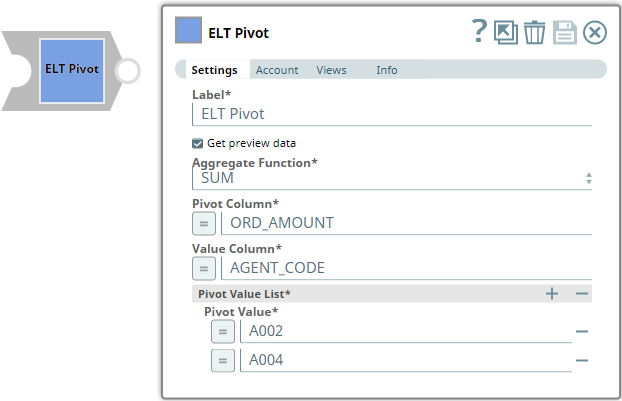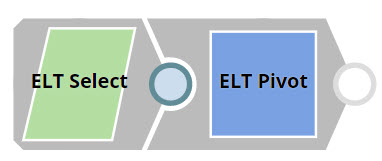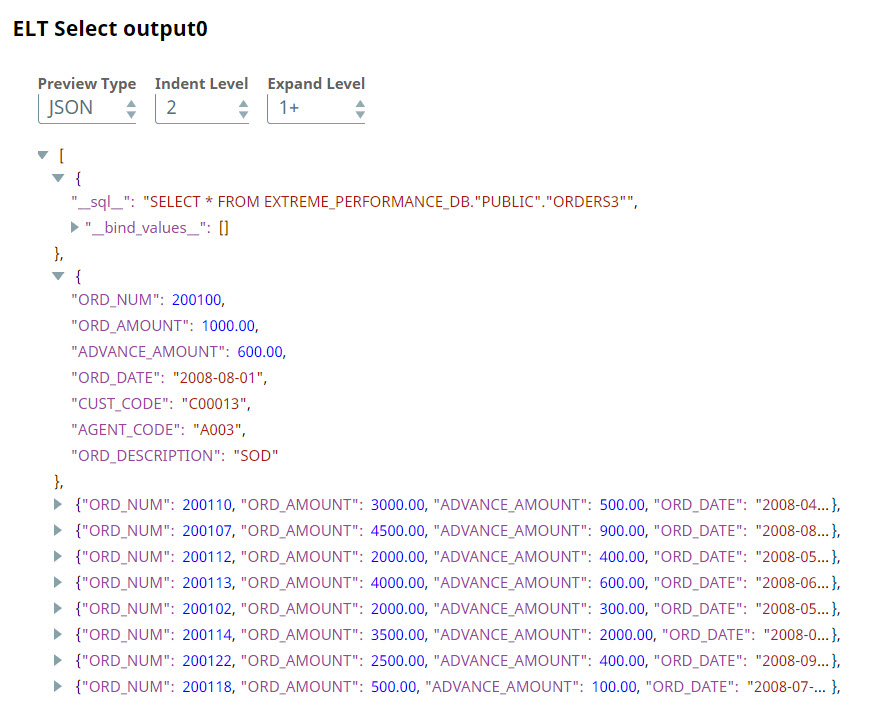In this article
...
A typical use of this Snap is categorizing table data, and calculating the performance of sales professionals.
Prerequisites
None.
Limitations
...
Limitation
| Multiexcerpt include macro | ||||
|---|---|---|---|---|
|
Known Issues
| Multiexcerpt include macro | ||||
|---|---|---|---|---|
|
...
| Input/Output | Type of View | Number of Views | Examples of Upstream and Downstream Snaps | Description |
|---|---|---|---|---|
| Input | Document |
|
| The SQL query in which you want to add the PIVOT function. Typically, it would be a SELECT query reading the source table. |
| Output | Document |
|
| The incoming SQL query with the PIVOT function. |
Snap Settings
| Parameter Name | Data Type | Description | Default Value | Example | ||||||||
|---|---|---|---|---|---|---|---|---|---|---|---|---|
| Label | String |
| ELT Pivot | Pivot Student Data | ||||||||
| Get preview data | Check box |
| Not selected | Selected | ||||||||
| Aggregate Function | String | Select the aggregate function that to apply to the pivot column. Available options are:
| AVG | SUM | ||||||||
| Pivot Column | String | Required. Specify the column in the source table upon which to apply the aggregate functions. | N/A | ORDER_AMOUNT | ||||||||
| Value Column | String | Required. Specify the column for whose to calculate the aggregate on the pivot columns. | N/A | AGENT_CODE | ||||||||
| Pivot Value List | Required. This field set enables you to specify the values in the Value Column for which you want to see the aggregated values. Specify each value in a separate row. Click + to add a new row. This field set consists of the following field:
| |||||||||||
| Pivot Value | String | Required. Enter the list of unique values in the Value Column to include in the output. The column contains null values if the specified value here does not have any records in the input table. | N/A | A002 A004 | ||||||||
...
We want to analyze the sales made by two agents in a company. We can construct a query that reads the source table, filters the sales records of these two agents using a WHERE clause, and then add aggregate functions grouped by the agent's identifier. However, this approach only provides us the aggregated score without further details.
In a sales environment, we typically need additional details such as dates of sale, products sold, and number of orders. This Pipeline shows how we can use the ELT Pivot Snap to accomplish this task.
First, we build a SELECT query to read the target table. To do so, we use the ELT Select Snap. Sales data is maintained in the table ORDERS3. We configure the ELT Select Snap to read this table. Additionally, we also configure the Snap to show a preview of the SELECT query's execution:
A preview of the output from the ELT Select Snap is shown below:
We want to calculate the total sales made by the agents, A002, and A010, on each day. Therefore, we use the ELT Pivot Snap and configure it as shown below:
...
This Snap builds the following query based on this configuration:
A tabular representation of this output is as shown below:
The days on which the agents did not make any sale are automatically assigned a null value. We can use an ELT Insert-Select Snap to write the query's output into another table. Additionally, we can use a combination of the ELT Copy and ELT Filter Snaps to write each of the agent's performances into separate tables.
...





